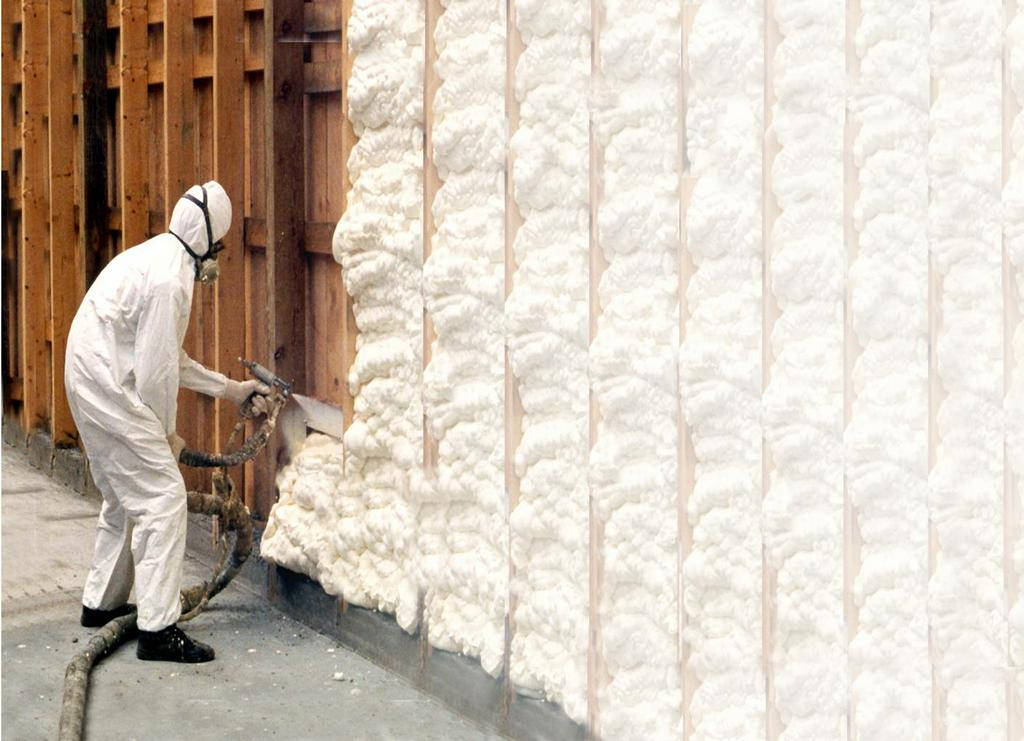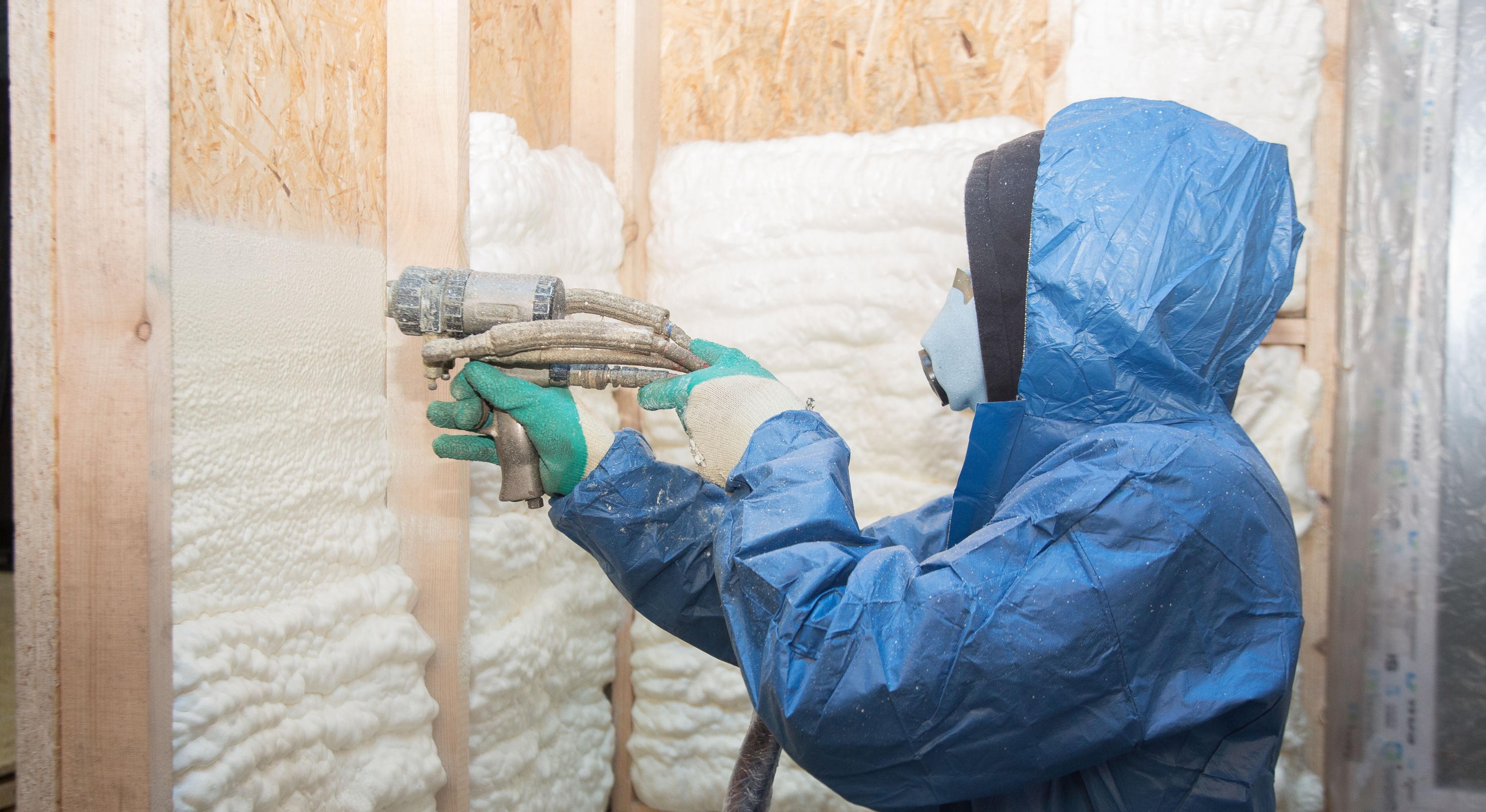Recognizing the Benefits of Using Spray Foam for Insulation Projects
Wiki Article
Spray Foam: The Ultimate Remedy for Air Sealing and Insulation
Spray foam insulation has arised as a leading solution for effective air securing and thermal insulation, providing a special combination of residential or commercial properties that establish it besides standard approaches. Its capacity to broaden and fill spaces makes it especially efficient in stopping air leakage, which can dramatically affect energy efficiency. Nonetheless, recognizing the complete extent of its benefits, setup processes, and comparisons with other insulation types is vital for making notified decisions. As we discover these elements, the implications for both brand-new building and constructions and retrofits come to be progressively considerable. What factors should affect your option?What Is Spray Foam?
Spray foam is a functional insulation material that integrates the concepts of air securing and thermal resistance to enhance power efficiency in structures. Made up mainly of polyurethane or various other similar substances, spray foam is used as a liquid that broadens upon contact with surfaces, creating a strong, continuous layer of insulation. This unique residential or commercial property enables it to fill up gaps, cracks, and voids that conventional insulation products might neglect, giving a premium air seal.There are 2 main kinds of spray foam: open-cell and closed-cell. Open-cell spray foam is lighter and much more adaptable, supplying superb audio absorption and a reduced R-value per inch - Spray Foam. On the other hand, closed-cell spray foam is denser, providing a higher R-value, moisture resistance, and included architectural stability to building parts
The application procedure commonly involves customized equipment, ensuring a smooth application that complies with various substratums, consisting of steel, wood, and concrete. This adaptability makes spray foam appropriate for both brand-new building and constructions and retrofitting existing structures. Its capacity to develop an impermeable obstacle considerably adds to lowering energy usage and improving interior air top quality, thus making it a favored choice among building contractors and house owners alike.
Benefits of Spray Foam Insulation
Among one of the most significant benefits of spray foam insulation is its phenomenal ability to develop a constant air obstacle, which successfully decreases energy loss. Unlike traditional insulation products, spray foam expands to fill spaces and cracks, making certain that air leak is substantially minimized. This characteristic not just boosts power effectiveness however additionally causes decrease utility bills in time.
Additionally, spray foam insulation gives superior thermal resistance, adding to a more stable interior environment. Its high R-value per inch enables reliable insulation in restricted rooms, making it optimal for attic rooms, walls, and crawl rooms. In addition, the moisture-resistant residential or commercial properties of spray foam assistance prevent mold and mildew growth, advertising healthier living problems.
An additional crucial benefit of spray foam insulation is its sound-dampening qualities (Spray Foam). It efficiently minimizes sound transmission between areas, producing a quieter and a lot more comfy home atmosphere. The resilience of spray foam also stands apart, as it does not sag or work out in time, preserving its performance throughout its lifespan
Just How Spray Foam Works
Comprehending how spray foam insulation works is vital for valuing its effectiveness in air securing and thermal resistance. Spray foam insulation contains 2 primary elements: isocyanate and polyol material. When these components are blended, they undergo a chain reaction that triggers the product to increase quickly, producing a dense foam that loads cavities, cracks, and gaps.As the foam expands, it adheres to surfaces, creating an impermeable seal that significantly minimizes air seepage. This particular makes spray foam insulation very efficient at stopping drafts and moisture penetration, which can result in power loss and damages with time. Additionally, the closed-cell variant of spray foam provides exceptional thermal resistance because of its rigid structure, successfully decreasing warmth transfer.
The unique residential or commercial properties of spray foam allow it to adapt irregular surface areas, making certain comprehensive coverage and a smooth obstacle. Because of this, spray foam insulation not just boosts energy efficiency but additionally adds to enhanced interior air high quality by minimizing the accumulation of toxins and irritants. Eventually, comprehending the mechanics behind spray foam underscores its duty as a superior selection for insulation and air sealing in both household and business applications.
Setup Process Overview

Prior to setup, the room must be effectively cleaned up and prepped, guaranteeing that surfaces are devoid this article of dirt, debris, and dampness. This action is essential due to the fact that impurities can endanger adhesion and total performance. As soon as the location is prepared, the application involves mixing the two elements of the spray foam, which expands upon get in touch with and fills up voids effectively.
Trained professionals must perform the installment, using specialized tools to make sure uniform coverage and optimum density. Safety and security precautions, including putting on protective equipment and ensuring correct ventilation, are necessary throughout this procedure. After application, the foam usually cures quickly, creating a solid barrier that improves energy effectiveness.
Comparing Spray Foam to Typical Insulation
When examining insulation options, spray foam insulation stands out in comparison to typical products such as fiberglass and cellulose. Unlike fiberglass and cellulose, which can enable air seepage, spray foam broadens upon application, loading crevices and voids to create an airtight seal.Additionally, spray foam provides a higher R-value per inch than traditional insulation types, offering more efficient thermal resistance in a thinner account. This particular is especially advantageous in spaces with minimal tooth cavity deepness. Additionally, spray foam is immune to dampness and mold and mildew development, which can be a significant interest in cellulose and fiberglass, especially in moist environments.
However, spray foam insulation usually lugs a greater ahead of time cost than its typical counterparts. Homeowners should consider this initial financial investment versus long-lasting power savings and performance benefits. Eventually, while both insulation types serve their function, spray foam arises as an advanced option for modern insulation needs, especially in terms of air securing and thermal performance.

Verdict
In recap, spray foam insulation stands for a highly efficient solution for achieving ideal air securing and thermal resistance. Its special buildings, including wetness resistance and audio dampening, make it appropriate for various applications in both new building and constructions and retrofitting tasks (Spray Foam). Although the initial prices might be greater compared to conventional insulation materials, the long-term benefits, such as considerable power financial savings and boosted interior air high quality, validate the investment and emphasize its value in contemporary building practices.Spray foam insulation has actually emerged as a leading solution for reliable air sealing and thermal insulation, providing an unique combination of residential properties that establish it apart from conventional approaches.Spray foam is a flexible insulation material that combines the principles of air securing and thermal resistance to enhance power effectiveness in structures.When examining insulation alternatives, spray foam insulation stands out in comparison to traditional materials such as fiberglass and cellulose. Eventually, while both insulation types serve their purpose, spray foam my latest blog post arises as an extra advanced solution for contemporary insulation demands, especially in terms of air sealing and thermal efficiency.
In recap, spray foam insulation represents an useful source extremely effective remedy for achieving optimal air sealing and thermal resistance.
Report this wiki page